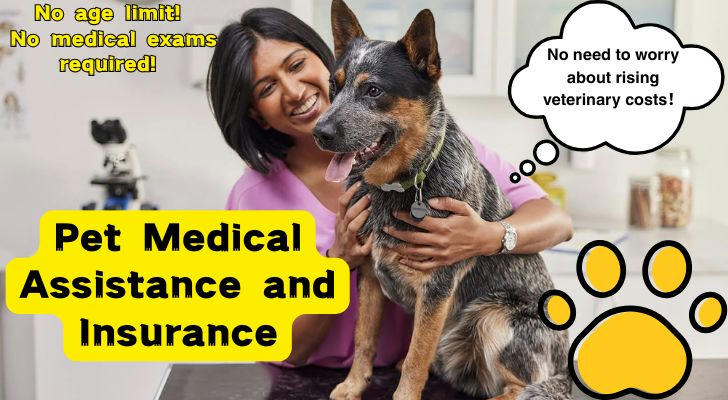🐾 A Guide to Pet Assistance and Low-Cost Insurance in the United States
Helpful resources designed for low-income families and seniors, supported by a government-backed nonprofit organization
Owning a pet brings companionship and joy, but rising veterinary costs place a heavy burden on many families. Fortunately, a variety of government-supported nonprofit organizations and affordable pet insurance plans in the U.S. help seniors and low-income groups care for their furry friends more easily.

🆘 Pet Assistance Programs: More Than Emergency Aid
Many government-supported nonprofit organizations offer pet assistance resources for low-income families, people with disabilities, and seniors aged 65 and older, including:
| Assistance Type | Description |
|---|---|
| 🏥 Emergency Medical Aid | Covers unexpected medical expenses like accidents, tumors, infections |
| 🍖 Pet Food Assistance | Provides short-term food subsidies or regular food deliveries to ensure daily nutrition |
| 🐶 Spay/Neuter & Vaccines | Collaborates with community vets to offer affordable spay/neuter and vaccination services |
| 🚕 Vet Transportation | Arranges transportation for elderly pet owners with mobility challenges to ensure timely veterinary care |
🐕 Why Are More Families Choosing Affordable Pet Insurance?
Pet insurance plans offer long-term protection that significantly reduces financial burden during accidents or illnesses.
✅ Key Flexible Coverage Features:
- No age limit: Pets aged 10 years and older are eligible
- No medical exams required, making the application process simple and fast
✅ Common Covered Services (Most Plans Include):
| Medical Service | Covered? |
|---|---|
| Emergency surgeries (e.g., fractures, tumor removals) | ✅ Yes (most plans) |
| X-rays, ultrasounds, MRIs | ✅ Yes (most plans) |
| Chronic condition medications (diabetes, heart disease) | ✅ Yes (most plans) |
| Preventive care (vaccines, parasite control, exams) | ⚠ Partial (requires Wellness add-on) |
| Pre-existing conditions | ❌ Generally excluded (early enrollment recommended) |
Note: Pre-existing conditions are typically not covered. Early enrollment is advised for broader protection.
👵 Who Benefits Most from Combined Pet Assistance and Insurance?
🐾 Low-income families or individuals (receiving social assistance)
🐾 Seniors aged 65 and above
🐾 Pet owners with mobility challenges or disabilities
🐾 Households with pets suffering chronic illnesses
🐾 Owners of senior pets (10 years and older)
📝 How to Apply for Pet Assistance and Insurance?
Applying for Pet Assistance Programs
- Submit proof of low income or social assistance
- Provide basic pet information and details of the urgent medical need
- Wait for review and response, typically within 3-5 business days
Choosing the Right Pet Insurance
Recommended reputable providers:
FIGO Pet Insurance
Monthly premiums typically range from $10 to $37, depending on pet age, breed, location, and coverage.Pets Best Pet Insurance
Monthly premiums usually range from $16 to $27, varying by pet details and plan selected.
Visit their websites to get personalized quotes. Both offer quick enrollment with no medical exam required.
❤️ Real-Life Story
Mary, 74, from Pennsylvania:
“My cat Sasha was diagnosed with kidney stones, and the surgery cost over $3,000. Fortunately, I had pet insurance that covered 90% of the medical expenses. I also received nutritional food support from the PAWS organization, which eased a lot of my financial stress.”
📌 Helpful Tips
- Enroll early to ensure more comprehensive coverage and avoid exclusions for pre-existing conditions.
- If you can’t afford insurance immediately, prioritize applying for emergency assistance programs to get timely help.
- Most assistance and insurance programs support online applications for convenience.
🎯 Take Action Now!
Choose the right assistance and insurance plan for your pet to ensure they receive the care they deserve. Visit multiple insurance platforms to get quotes and start protecting your furry family members today!
